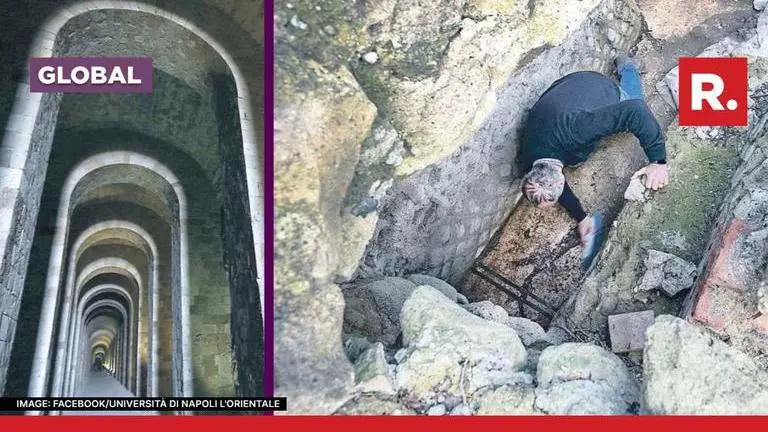Updated 19 February 2023 at 18:13 IST
Archaeologists in Italy unearth 2,000 year-old hall where emperor & knights used to party
Archaeologists in Italy have unearthed a 2,000 year-old massive hall where knights, merchants and even emperors lived, relaxed and partied.
- World News
- 2 min read

Archaeologists from the Oriental University of Naples in Italy discovered an ancient hall in a villa located on a cliff in Posillipo. The university's Facebook page said the ancient hall had a white mosaic with a double black frame in the villa of Vedio Pollione, a Roman knight who lived in the first century before Christ. The villa was famous for its parties in which Roman Emperor Augustus also participated. The living room, located below the villa's springs, is thought to date back to the late Republican age or the first century AD.
“Ours is still a hypothesis. A stratigraphic dating is still missing, but based on the style that hall could date back to the late Republican age or Augustan at the latest", said Marco Giglio, of the L'Orientale University of Naples, who led the excavation bringing to light what could having been the home of Publius Vedio Pollio, a successful wine merchant and politician.
The history
After being lost for two thousand years, the hall on the floor of the Imperial Villa of Pausilypon has been rediscovered. This could reveal new information about the villa's first owner, Publius Vedio Pollione, a wealthy and ruthless Campanian knight who was a successful wine merchant and politician. Pollione was close to the emperor Augustus, but he eventually embarrassed him to the point where he was subjected to something similar to damnatio memoriae (erasure from official records) after his death. The rediscovery of the villa's floor could provide new insights into Pollione's life and the history of the villa. So much so that Augustus, who inherited its assets, radically transformed that villa to erase all traces of its master.
The excavation, conducted with the concession of the Ministry of Culture and in agreement with the Superintendency for Archaeology, fine arts and landscape of the Campania municipality, engaged in a project to enhance the archaeological park of Posillipo.
Advertisement
Under the service areas of the baths, a floor made of tiny white tiles with a black frame emerged. It belonged to a large hall overlooking the sea. Augustus reigned from 27 BC and Pollione died twelve years after that in 15 BC, and it was then that his fabulous Neapolitan villa passed into the hands of the emperor. Augustus transformed that place into service rooms for his personal spa.
Published By : Digital Desk
Published On: 19 February 2023 at 18:13 IST
